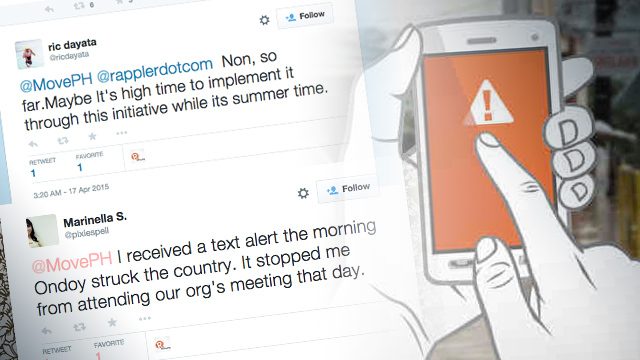SUMMARY
This is AI generated summarization, which may have errors. For context, always refer to the full article.

MARIKINA, Philippines – Marikina City will make #ZeroCasualty a reality.
The city’s preparation for disasters does not end with improved equipment and emergency assistance trainings. The use of social media and technology can also help in disaster-preparedness and response.
This is what residents learned during a Rappler social media workshop conducted on Friday, June 26, at the Marikina Legislative Building.
The 73 participants were comprised of students, teachers, volunteers, and local government officials from different barangays in Marikina. During the workshop, they were taught how to use social media tools like Facebook, Twitter, and also the Rappler’s Project Agos online platform.
Launched in September 2013, Project Agos is an information and communications platform that combines top-down government action with bottom-up citizen involvement to help communities learn about climate change adaptation and disaster risk reduction.
Coordination among citizens
Marikina was a victim of Tropical Storm Ondoy in 2009, with 246 deaths due to flooding. The Marikina River makes the city a flood-prone area.
Mark Lester Mejia, one of the Marikina City Disaster Risk Reduction and Management Office (MCDRRMO) staff, has learned from his Ondoy experience.
“‘Di ko makalimutan yung Ondoy kasi nung dapat magre-rescue kami, imbes na makapag-rescue, ang lahat ng tao ‘di na makalabas sa bahay dahil sa paglaki ng tubig at tsaka kaming rescuer, kailangan muna, unahin namin ang pamilya namin bago kami mag-rescue,” he said.
(I cannot forget Ondoy because when we were about to conduct rescue operations, instead of rescuing people, all of us could not go outside because of the flood, and we rescuers wanted to save our family first before we rescue others.)
According to Mejia, local government units are always prepared with their rescue equipment but the residents must also always follow instructions especially when they are ordered to evacuate from flooded areas.
The coordination of the government and the citizens is essential in disaster management because it could save more lives.
During the workshop, the participants received training on how social media can help in information dissemination during disasters.
They learned how to use the Project Agos Alert Map, an online disaster information map wherein netizens may report flood and rescue alerts and other general information.
A simulation on information management was also conducted.
The participants divided themselves into 5 groups, and in each group, there was an assigned victim who asked for help through Facebook and Twitter, and an assigned rescuer who asked for contact information.
Where’s your exact location, Ma’am? So I can send you urgently a fire-team. #AgosTest https://t.co/qbi48uvgjQ
— Jay (@JysnMnl) June 26, 2015Waist-level na tubig sa marikina bayan #agostest
— Regina (@iamreginahalili) June 26, 2015
Other members of the group were assigned to use the Agos Alert Map.
Active youth
Students who participated in the workshop are active on social media.
Mark Anthony Teñoso, student of Pamantasan ng Lungsod ng Marikina (PLMar), said that the use of social media during disasters is not new to him since the youth is very active on Facebook and other social networking sites.
“Ako kasi, always updated sa Facebook, Twitter, lahat. Diyan ako nakakakuha ng maraming information (I’m always updated on Facebook, Twitter, everything. That’s where I get a lot of information),” he said.
He gets updates usually from the Facebook and Twitter accounts of the Marikina Public Information Office. These updates can also be shared by the youth to their parents who do not have Internet access, he said.
For the final activity, the groups made lists of things to do before, during, and after an earthquake which they also discussed in front of their co-participants.
The MCDRRMO also gave disaster emergency kits after the workshop.
Project Agos has conducted similar workshops in other parts of the country such as Cagayan de Oro and Naga.
Project Agos partners include national government agencies, international and local non-governmental organizations, local government units, and private groups. – Rappler.com
Add a comment
How does this make you feel?
There are no comments yet. Add your comment to start the conversation.